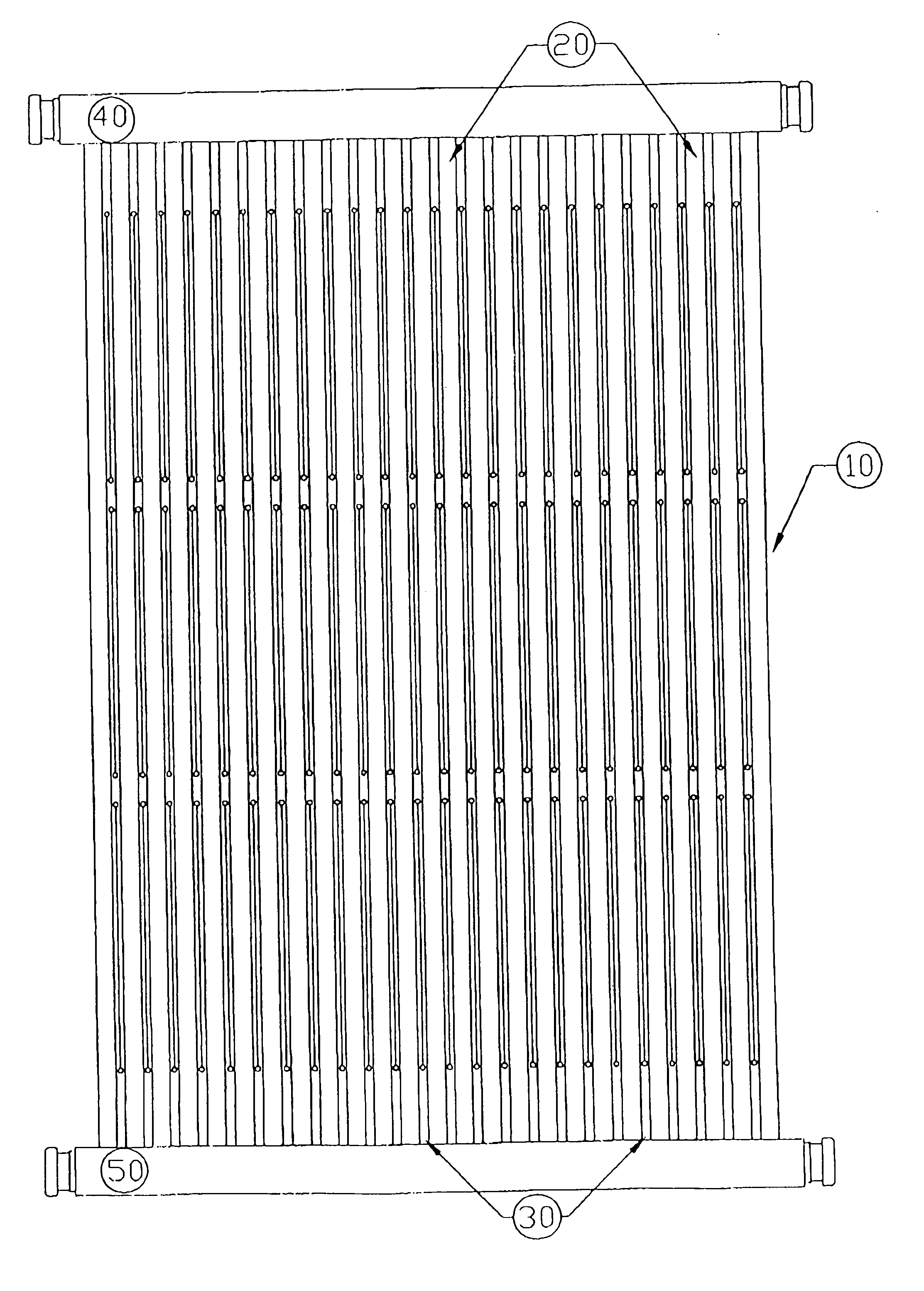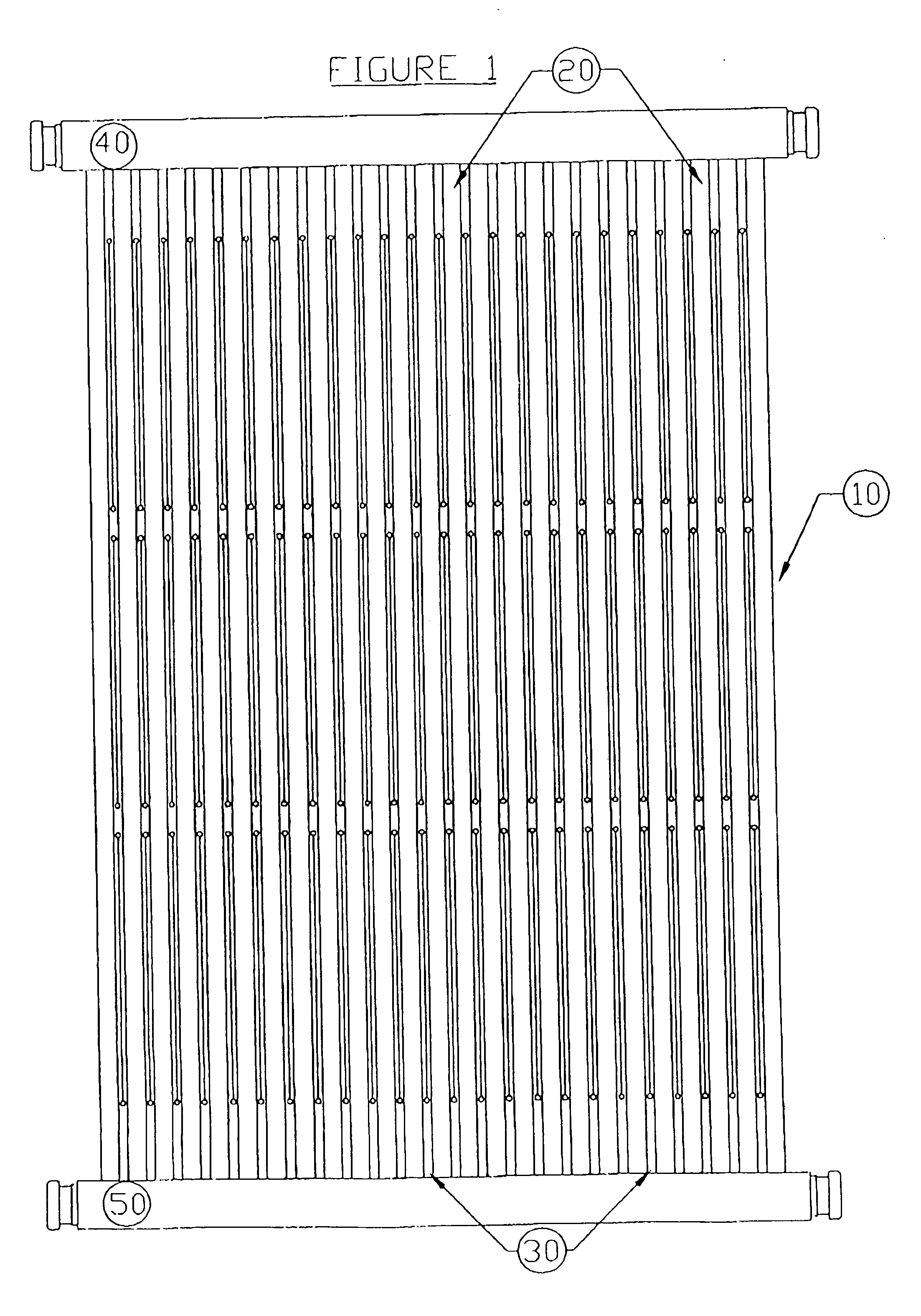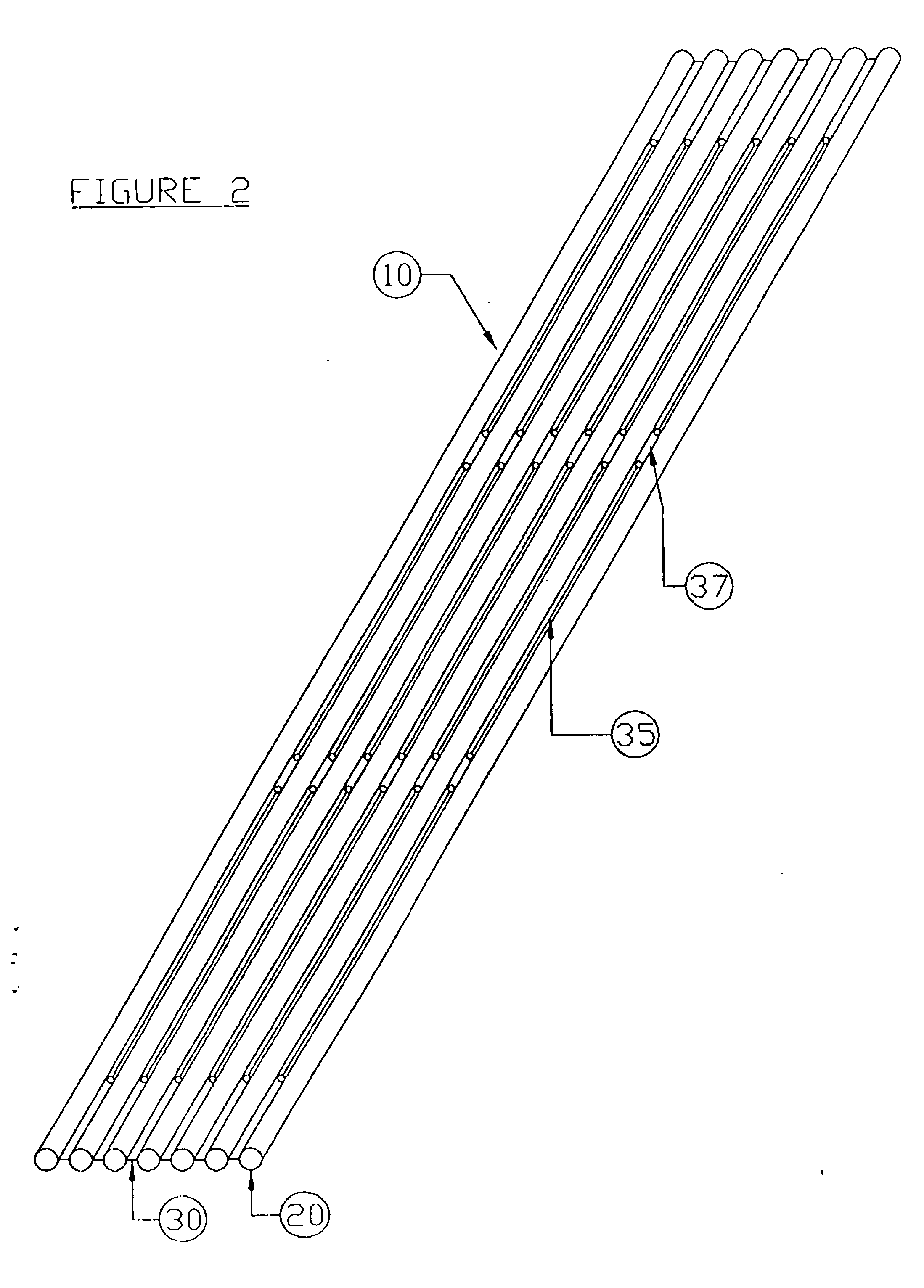High efficiency tube mat solar collector having intermittently separated tubes and method for preventing damage to a solar collector
a solar collector and tube mat technology, applied in the field of high-efficiency tube mat solar collectors, can solve the problems of reducing solar energy collection capability, thermal energy loss, and proportionately worsening of energy collection capability, and achieve the effect of reducing lifting for
- Summary
- Abstract
- Description
- Claims
- Application Information
AI Technical Summary
Benefits of technology
Problems solved by technology
Method used
Image
Examples
Embodiment Construction
[0032] A first preferred embodiment of the solar collector of the present invention is shown in FIGS. 1-3. Tube mat 10 comprises a plurality of hollow tubes 20, with each tube 20 directly joined to an adjacent tube. By “directly joined to an adjacent tube” it is meant there is no web or other spacer material between adjacent tubes. First manifold 40 is connected to a first end of each hollow tube 20, while second manifold 50 is connected to a second end of each hollow tube 20.
[0033] Referring to FIG. 2, adjacent tubes 20 are separated from one another along a portion of their length. The longitudinal separation has a length sufficient to permit individual tubes to move about their major axis in both the horizontal and vertical directions under high wind conditions. The width of the separation is sufficiently thin that the separation is difficult to visually observe from the ground under low to moderate wind conditions, when the solar collector is conventionally mounted on a residen...
PUM
 Login to View More
Login to View More Abstract
Description
Claims
Application Information
 Login to View More
Login to View More - R&D
- Intellectual Property
- Life Sciences
- Materials
- Tech Scout
- Unparalleled Data Quality
- Higher Quality Content
- 60% Fewer Hallucinations
Browse by: Latest US Patents, China's latest patents, Technical Efficacy Thesaurus, Application Domain, Technology Topic, Popular Technical Reports.
© 2025 PatSnap. All rights reserved.Legal|Privacy policy|Modern Slavery Act Transparency Statement|Sitemap|About US| Contact US: help@patsnap.com



